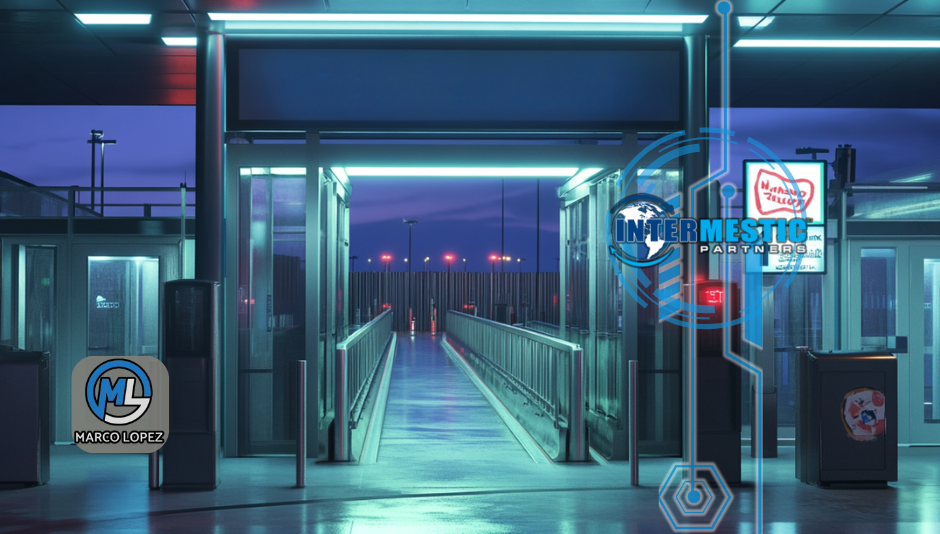Smart Supply Chains: How Tech Is Transforming U.S.-Mexico Commerce
- Marco Lopez

- May 10
- 2 min read

From Paper to Predictive
Once reliant on paper logs and manual tracking, the U.S.-Mexico supply chain has evolved into a high-tech ecosystem. Today, with over $600 billion in annual commerce moving across the border, the need for speed, accuracy, and resilience has never been greater.
At Intermestic Partners, the international advisory firm I founded in 2011, we work with stakeholders across sectors to modernize supply chain infrastructure—especially between Arizona and Mexico. This includes real-time customs solutions, trade tech integration, and future-forward strategies built on digital transformation.
A Look Back: How We Got Here
1980s: The U.S. embraced Electronic Data Interchange (EDI) to digitize document exchange.
Mexico: Adopted Transport Management Systems (TMS) and automated data collection for warehouse and logistics optimization.
ERP software centralized enterprise data, improving productivity and reducing human error.
Together, these technologies laid the foundation for what’s now possible: intelligent, interconnected supply chains.
Game-Changing Technologies Today
📍 Real-Time Tracking & GPS
Offers live shipment visibility
Improves Estimated Time of Arrival (ETA) accuracy
Supports faster customs clearance and cargo security
🤖 AI & Machine Learning
Predict demand and market trends
Optimize delivery routes
Automate customer service and risk alerts
🌐 IoT (Internet of Things)
Connects devices across the supply chain
Enables real-time inventory updates
Reduces stockouts and overstocking
A leading logistics firm in Mexico using IoT sensors reduced warehouse errors by 40%—boosting delivery speed and customer satisfaction.
Technology | Impact |
AI & Machine Learning | Predict Market Trends, Optimize Routes |
IoT | Smart Inventory & Operational Decisions |
Real-Time Tracking | Enhanced Visibility and Border Control |
Why This Matters for U.S.-Mexico Commerce
These tools are not just conveniences—they’re strategic assets:
🔐 Customs Efficiency: Data-rich tracking improves binational customs coordination.
📉 Cost Savings: Automation and predictive analytics reduce waste and downtime.
🧠 Informed Strategy: AI-driven insights help businesses mitigate risk and scale smarter.
🏪 Inventory Precision: IoT systems reduce guesswork and increase inventory accuracy.
At Intermestic, we’re integrating these technologies into our own cross-border infrastructure initiatives—like Intermestic SouthBridge, a 200-hectare logistics and industrial hub designed for next-generation commerce.
What’s Coming Next?
🧬 Biometrics in Logistics
Fingerprint/facial recognition for secure personnel access
Enhanced identity verification at warehouses and ports
📊 Predictive Analytics
Demand forecasting for leaner inventory management
Advanced weather and disruption modeling
📄 Blockchain & Smart Contracts
Transparent, self-executing contracts
Reduced friction in vendor and customs agreements
Challenges to Watch
Even with the promise, challenges remain:
Cybersecurity risks in interconnected systems
Integration costs for SMEs
Policy gaps in binational tech regulation
But with the right strategy, cross-border partners can navigate these issues and unlock enormous value.
Conclusion: A Smarter Border Economy
Technology is no longer a supplement to supply chains—it’s their central nervous system. In the U.S.-Mexico trade corridor, embracing AI, IoT, blockchain, and real-time tools means faster, safer, and smarter commerce.
At Intermestic Partners, we’re committed to helping governments and companies build infrastructure that meets the moment. The future of logistics is here—and it’s interoperable, intelligent, and international.
Ready to upgrade your supply chain strategy? Let’s connect and shape the next frontier of U.S.-Mexico commerce.
.png)




Hello, I'm Jelly John, a creative specialist from the United States who is passionate about timeless fashion. I've spent years honing the process of making the legendary leather brown jacket—a symbol of raw elegance and timeless design. My work combines historical aesthetics with current tailoring, guaranteeing that each item tells a unique tale. From finding excellent leather to mastering every stitch, I strive for excellence in all of my designs. Through my work, I provide thoughts, trends, and the history of the leather brown jacket. Join me on a journey through fashion that will never fade.